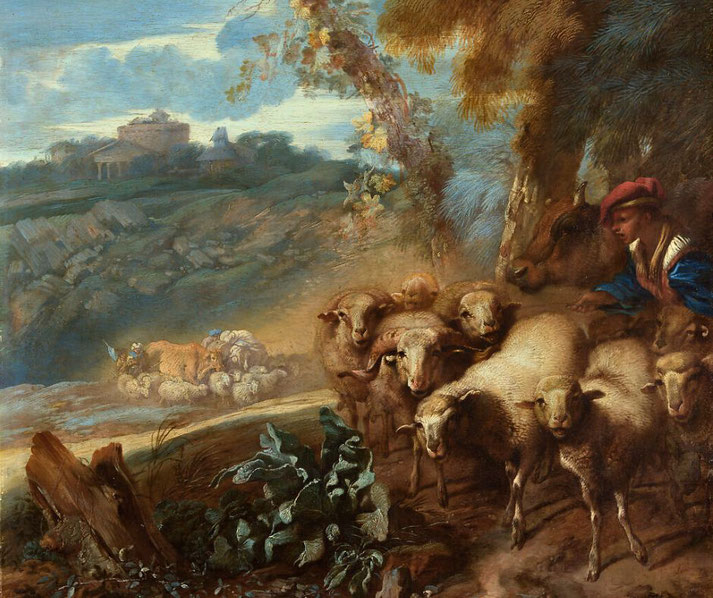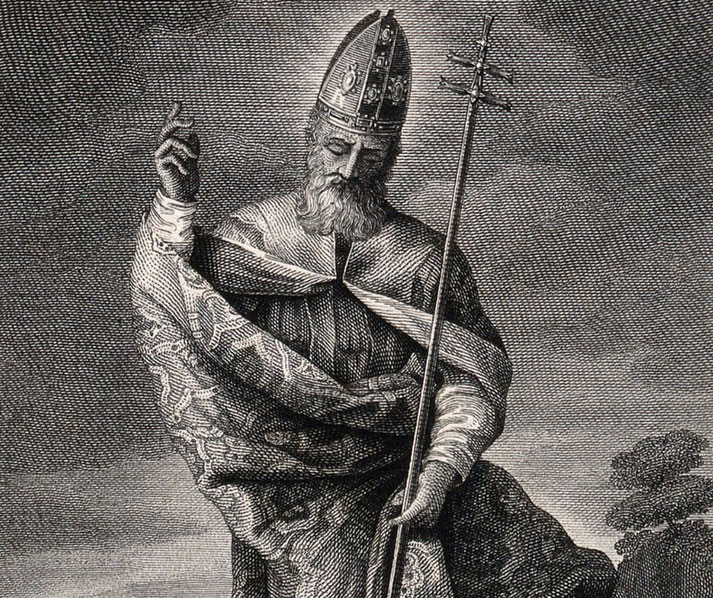Who was the real St. Patrick?

Long before he became associated with leprechauns, green beer, and rowdy parades, St. Patrick was a historical figure whose life connected the Roman and post-Roman worlds.
The real Patrick, stripped of later myths, helped spread Christianity to Ireland during the fifth century. His story, as he told it, was one of captivity and repeated conflict with the Irish elite, shaped by his effort to spread Christianity.
What do we know about his early life?
Patrick was born in Roman Britain, most likely between AD 415 and 420. His birthplace remains uncertain, but historical discussion usually narrows it to western Britain, possibly near the Severn Estuary or in Cumbria.
His original name was probably Maewyn Succat, and he later adopted the Latin name Patricius, which means "fatherly" or "nobleman."
His family belonged to the Romanised upper class. His father, Calpornius, held the position of decurion, a local government official responsible for tax collection, and also held the role of deacon in the Christian church.
His grandfather had been a priest. His name was Potitus. This background suggests that Patrick was born into a Christian household with some local status and access to reading and writing.
At about sixteen, Patrick was captured by Irish raiders during a coastal raid. This likely occurred during a period of ongoing trouble in Britain, following the weakening of Roman control after AD 410.
Patrick was taken to Ireland and sold into slavery. He later described himself as a herdsman who spent six years looking after animals, probably sheep, in an isolated rural part of Ireland, possibly in present-day County Mayo or Antrim.

How he became a missionary to Ireland
During this time of enslavement, Patrick experienced a religious change. He later wrote that he prayed constantly, both by day and by night, and after six years, he said he received a vision from God telling him to escape.
He fled his captivity, travelled two hundred miles to the coast, and found passage on a ship back to Britain.
The details of his escape, including his long walk and later travels on the continent, are drawn from his own writings and are often unclear.
However, he eventually returned home to his family, who welcomed him as a lost son.
Patrick's most important decision came later. He chose to return to Ireland as a Christian missionary.
He received religious training in Gaul, probably in Auxerre, and was later moved by what he described as another vision.
He said he heard the voices of the Irish people calling him back to preach to them.
Auxerre was a well-known centre of Christian learning. Some later traditions suggest he may have studied under Germanus of Auxerre, though this did not appear in Patrick's own account.
His return to Ireland did not happen immediately, nor did he go as the first missionary.
A bishop named Palladius had been sent to the Irish by Pope Celestine I in 431, but Patrick's work proved more effective.
How St. Patrick converted the Irish
Patrick's missionary efforts are traditionally thought to have focused mainly on the north and west of Ireland.
He worked to convert the Irish population, especially chieftains and local kings, knowing that their support would help spread Christianity.
Some scholars suggest he may have interacted with powerful groups such as the Uí Néill.
His methods included baptisms, starting churches, and appointing clergy. His writings suggest he faced resistance, including beatings and threats.
He also claimed to have refused gifts and bribes, presenting himself as honest and focused only on his religious task.

Patrick did not convert all of Ireland, nor did he turn the country Christian by himself.
His mission was part of a wider and longer process of Christian conversion that involved many other people and took place over several generations.
However, later church stories and traditions made him into a national apostle.
Mediaeval writers such as Muirchú and Tírechán added details to his story in the seventh century.
They wrote stories that included miracles such as driving snakes out of Ireland and using the shamrock to explain the Trinity.
The story about snakes is symbolic, as post-glacial Ireland had no native snake population.
The shamrock legend appeared much later and was not part of early records.
These stories had no basis in his own writings, but helped increase his later fame.

How much of St. Patrick's story is true?
Two surviving works are attributed to Patrick: the Confessio and the Letter to the Soldiers of Coroticus.
The Confessio, likely written in the mid-fifth century, is a personal account of his life and mission.
It defends his work and expresses his devotion to God, possibly in response to criticism from other clergy.
The Letter is a strong criticism of a British warlord named Coroticus, whose men had attacked Irish Christian communities and sold newly baptised converts into slavery.
In this letter, Patrick also criticised the British Christian community for allowing such acts.
These two texts are among the earliest surviving examples of Christian writing from Ireland and provide rare first-hand evidence of missionary work in the early mediaeval period.
Patrick likely died sometime between AD 460 and 493. The later date comes from historical records, but the earlier estimate better fits the likely timeline of his life and mission.
His burial place has traditionally been regarded as Downpatrick, in what is now Northern Ireland.
Over the centuries, he became a figure of Irish Christianity, local pride, and religious tradition.
He never received formal recognition as a saint, as official sainthood steps did not yet exist, and sainthood in this period came from popular and local church support.
The historical St. Patrick was not a miracle worker, nor was he Irish. He was a Roman citizen, a former slave, and a missionary who acted on a strong belief in a calling from God.
His writings reveal a man who struggled with self-doubt and danger, but who kept going.
By returning to the land of his former captors, he became a key figure in the history of early mediaeval Ireland, not through force or political power, but through belief and persistence.
What do you need help with?
Download ready-to-use digital learning resources
Copyright © History Skills 2014-2025.
Contact via email
With the exception of links to external sites, some historical sources and extracts from specific publications, all content on this website is copyrighted by History Skills. This content may not be copied, republished or redistributed without written permission from the website creator. Please use the Contact page to obtain relevant permission.





